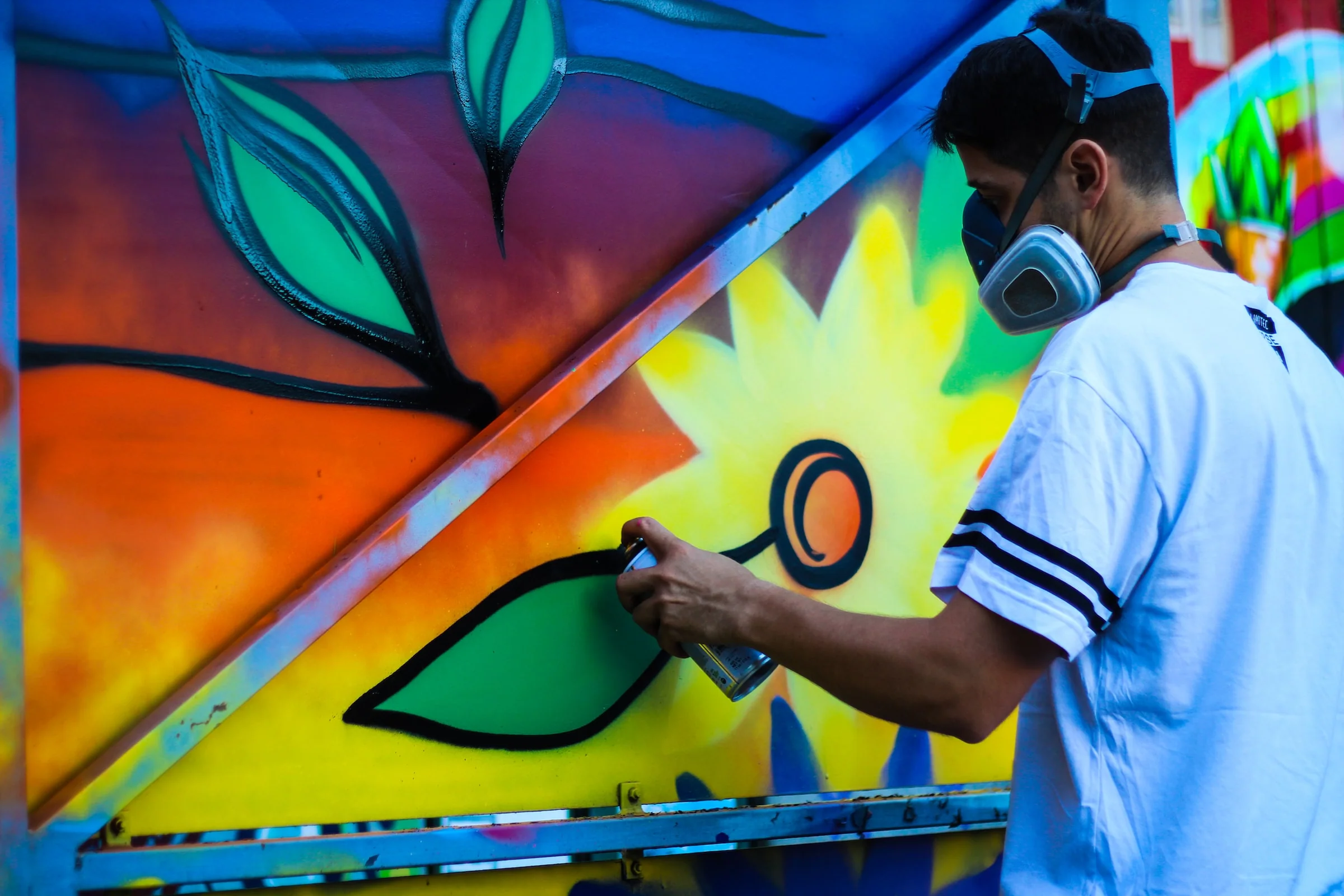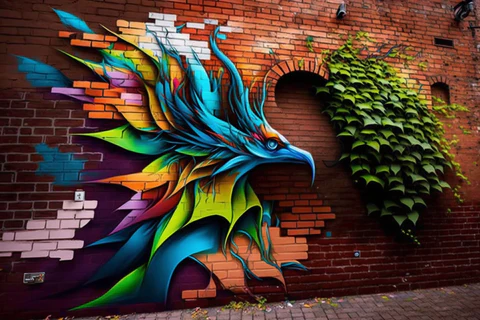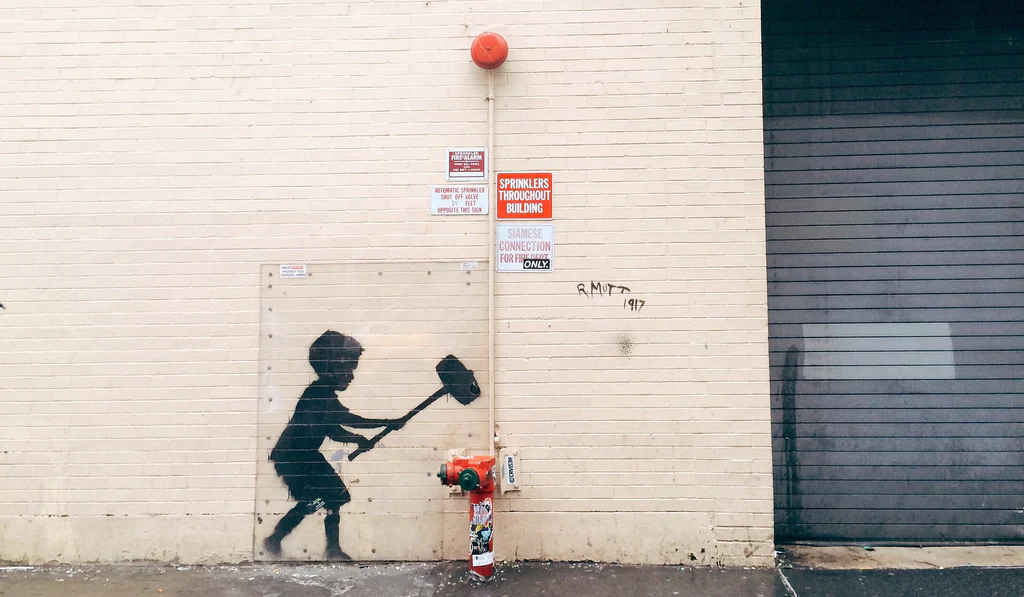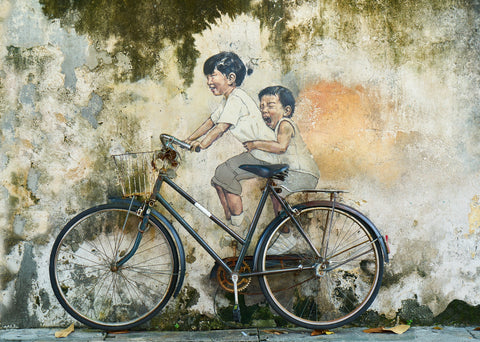Why Graffiti Should Be Legal?

Graffiti is an art form that has been around for centuries. It often features stylized writing, painting, or drawings on public walls, buildings, and other surfaces.
Graffiti can range from simple lettering to elaborate works of art. It is often seen as a sign of rebellion and can be used to express feelings of social injustice or political dissent.
What makes graffiti unique is its ability to be highly personalized and meaningful to the individual who created it.
This allows it to be a powerful form of expression in times when people may not feel like they have many outlets for their thoughts and feelings.
Graffiti also has a strong connection with urban culture, giving it added meaning in certain areas where there are high concentrations of people living in poverty or struggling with inequality issues. Keep on reading to find out why graffiti should become legal.
The Importance of Graffiti
When looking at graffiti pieces, you will see that they come in all shapes and sizes – from small doodles on the side of buildings to large-scale murals painted on walls by entire teams of artists working together over several days (or weeks). Some of the even get turned into graffity shirts later.
The colors used vary greatly too – some are vibrant while others are more subtle; some are black-and-white while others feature bold hues; still, others use mixed media techniques such as layering stencils, spray paint, or digital projection mapping onto surfaces for maximum impact.

The main reason why graffiti should be legal is that it gives individuals an outlet for self-expression without fear of retribution from authorities.
To some extent, you can think graffiti is a public good.
Allowing this type of artwork opens up opportunities for communities to come together through shared experiences.
And, also conversations about topics that might otherwise remain hidden due to stigma or lack of understanding within society at large.
Legalized graffiti encourages creativity which can help foster positive change in cities across the globe – whether through improved public transportation systems, safer streets, or simply more aesthetically pleasing environments overall.
Unrestricted Creative Expression: Graffiti is Art and Not Vandalism
Graffiti’s by definition often seen as a destructive and illegal art form, but it shouldn’t mean it can’t be used for positive expression. It should be considered a legal outlet for creativity. Allowing graffiti to become legal would help people express their emotions without fear of consequences from law enforcement. Unrestricted creative expression allows artists to explore their ideas and encourages them to pursue their passions with less worry about being reprimanded by the authorities.
Making graffiti legal would open up the opportunity for local governments to benefit economically from this type of artwork. They could use public spaces like parks, bridges, and other outdoor areas as venues for artistic displays that not only beautify neighborhoods but also bring in revenue through ticket sales or sponsorships.
Legalizing graffiti would make it easier for people to collaborate on projects together without having any restrictions placed on what they can create due to potential criminal charges that may arise if they are caught doing something “illegal” such as spray painting walls or streetscapes with murals or stencils.
It gives individuals the freedom to explore different techniques and styles that have been traditionally limited due to fear of getting into trouble with law enforcement agencies. With fewer barriers standing between those who wish to paint outdoors come more opportunities for experimentation which helps promote growth within this unique form of self-expression.
Enhancing the Aesthetic of Public Places: Graffiti Art Can Add Artistic Value to Spaces
Graffiti art can be an effective way to enhance the aesthetic of public spaces. Rather than bland and boring walls, graffiti can bring new life and energy to a city or neighborhood. It can add vibrancy and color that would otherwise be absent.
While some may find it disruptive or distracting, in reality, graffiti has the potential to positively contribute to our urban landscape by transforming dull surfaces into works of art.
With graffiti comes increased community engagement and ownership over their local environment. Graffiti encourages people to take pride in their area as they express themselves through artwork on walls or buildings around them.
This connection with one’s surroundings helps foster a sense of belonging within a particular space – something that is especially important for those living in low-income neighborhoods where citizens often feel disconnected from the larger cityscape around them.
Legal graffiti also provides an outlet for young creatives who may not have access to traditional arts education programs or other forms of artistic expression due to economic barriers such as cost or location constraints.
Through street art, aspiring artists are able to share their talents with wider audiences while still staying true to their creative vision without fear of repercussion – something that is all too common when working within more structured settings like galleries or museums where there are stricter guidelines regarding content and presentation.
Cultivating Political and Social Local Identity
Graffiti has the power to cultivate local identity and foster a sense of community pride.
By displaying artwork in public spaces, graffiti can help to bring people together who share similar interests or values while also introducing diverse viewpoints into the conversation.
Street art gives people an outlet for creative expression without having to go through any bureaucratic channels or censorship protocols. As such, it can be used as a form of protest against social injustices like poverty or racism that often go overlooked by government officials and other authorities. In this way, graffiti serves as an important reminder that everyone deserves equal rights and respect regardless of background or socioeconomic status.
Moreover, allowing graffiti provides economic benefits for cities by drawing in tourists from around the world who are interested in exploring the urban culture. Allowing legal forms of street art can thus be beneficial both financially and socially speaking as it encourages collaboration between artists and citizens alike while helping promote creativity throughout neighborhoods.
Revitalizing Abandoned Areas
Graffiti can be a great way to revitalize abandoned areas in cities. It has the potential to bring life back into forgotten places, allowing them to become vibrant and interesting spots for residents and visitors alike.
By creating large-scale murals or smaller tags, artists can add visual interest that brings an area from dullness to creativity and beauty. Graffiti art often reflects the culture of its city or neighborhood–giving it an authentic sense of place that many people find attractive.
Graffiti encourages public participation by inviting viewers to explore the work on their own terms without fear of censorship or judgment. Providing legal outlets for street artists’ expression helps ensure that public spaces remain safe while still promoting artistic freedom and creativity throughout the cityscape.

Providing an Outlet for Political Statements
Graffiti has long been a powerful medium for political expression. From the wall-sized murals of Diego Rivera in Mexico City to the stenciled works of Banksy in London, graffiti has often been used as a tool for voicing dissent and challenging existing power structures. By legalizing graffiti, we can provide an outlet for citizens to express their opinions about current affairs without fear of retribution from authorities or vandalism from rival groups.
Not only does legal graffiti serve as a platform for free speech, but it also allows artists to create vibrant public displays that can foster community dialogue and engagement with local issues.
In addition to being aesthetically pleasing, these artworks are often meaningful statements about a society that encourage viewers to think critically about their surroundings. For example, a mural depicting the struggles faced by low-income communities may inspire conversations around economic inequality or spark activism within those neighborhoods.
Legalizing graffiti could be beneficial not just on an individual level but also on a collective one – allowing people to come together and use art as a means of creating positive change in their communities. Through this form of self-expression and collaboration, people will have access to unique opportunities for learning more about themselves and each other while at the same time making strides towards improving society’s quality of life overall.
To Wrap It Up
It is true to some extent that graffiti challenge the law, and challenge our perception of what’s beautiful, what’s meaningful, and what’s important. Street artists and graffiti artists alike use their art to express themselves, comment on society, and provoke thought. Graffiti often affects our opinions, and that’s a good thing!
We need art that challenges and not judges, pushes us out of our comfort zones, that makes us think. Banksy’s work is a prime example of this. He’s a master of using graffiti to make us question authority, to make us see the world in a new light. Embrace the beauty and the power of graffiti. Let street artists and graffiti artists do their thing without fear of reprisal.

FAQs
Why do many people believe that graffiti should be considered a public good?
Many people believe that graffiti should be considered a public good because it has the power to beautify public spaces, inspires creativity and social commentary, and bring communities together, even as it challenges traditional notions of what “art” is.
Why is the argument that “graffiti isn’t art” shortsighted?
The argument that “graffiti isn’t art” is shortsighted because it ignores the fact that art is subjective and can take many different forms, and it doesn’t take into account the emotional and social impact that graffiti can have on communities.
How does the growth of graffiti and street art challenge our understanding of the relationship between art and the law?
The growth of graffiti and street art challenges our understanding of the relationship between art and the law because it highlights the tension between artistic expression and public safety, and it raises important questions about who gets to decide what art is and where it’s allowed to be displayed.
Why do many people think that graffiti is an important form of artistic expression?
Many people think that graffiti is an important form of artistic expression because it has the power to elicit a “wow” reaction from viewers, challenge social and political norms, and offer a unique and unfiltered perspective on the world through the eyes of the artist.





